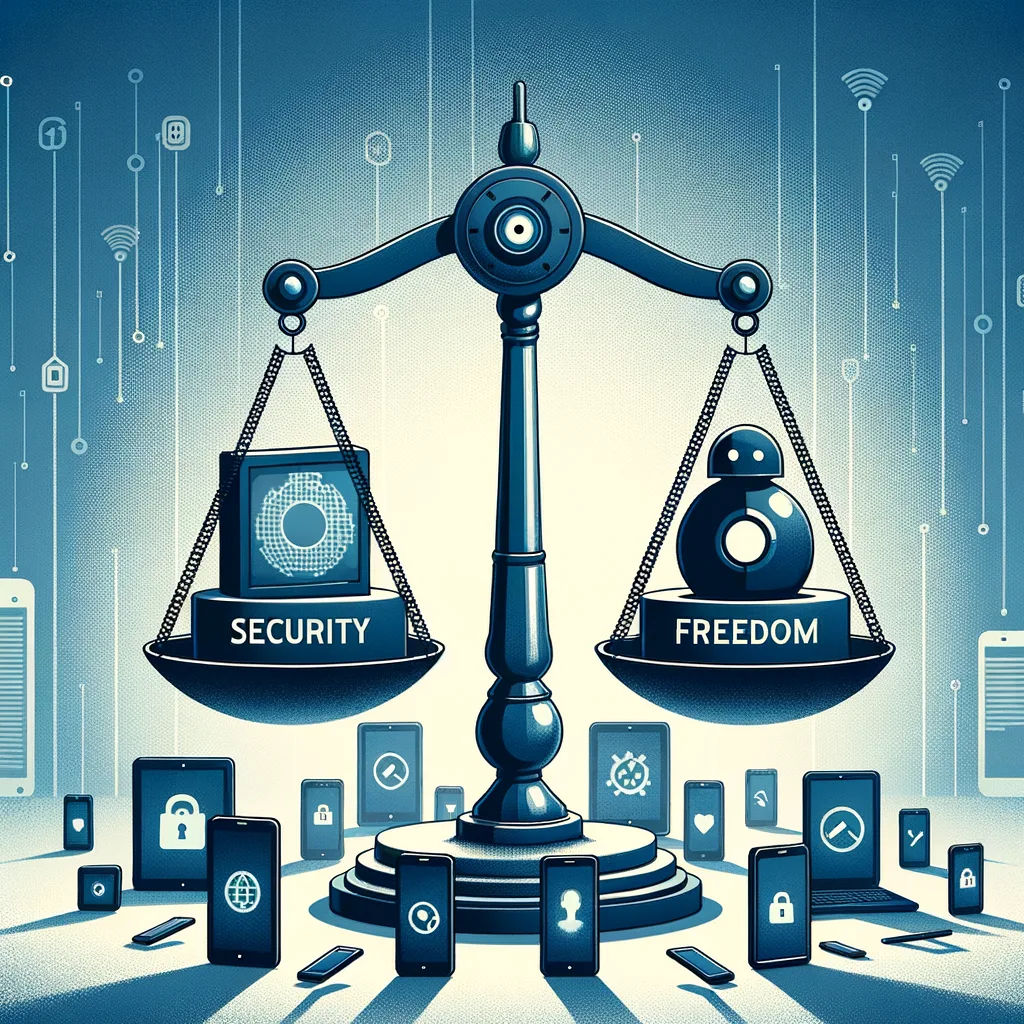In 2026, Android’s open-door policy for third-party apps will be facing its greatest threat yet as new restrictions proposed by Google could block users from installing APKs (Android application packages) from unverified sources . This move, framed as a security upgrade, could fundamentally reshape how millions worldwide experience mobile software—potentially closing one of the last open platforms in the smartphone market.
Well ,the debate is fierce: advocates warn of Android drifting toward Apple-like control, while Google cites escalating security challenges. The stakes? User freedom, developer innovation, and the future of mobile app ecosystems. In this detailed article you will get to know all on this.
Android 16 Will End Sideloading: Everything You Need to Know About Google’s Controversial Change
Google is implementing mandatory developer verification for all Android apps by 2026, effectively ending free sideloading across the entire ecosystem. This means no more downloading APK files from websites, custom app stores, or developer sources without Google’s approval—a move that’s sparking massive backlash from users and developers worldwide.
What’s Actually Changing and Why You Should Care ?
If you’ve ever downloaded an app directly from a website instead of the Play Store, you’ve used sideloading—Android’s ability to install apps from “unknown sources.” Currently, you can toggle this feature in your security settings with just a warning message. Google’s new policy will end this completely.
Here’s the crucial detail most people are missing: this isn’t tied to Android 16 or any specific Android version. Google is implementing these restrictions through Google Mobile Services and Play Protect, which means they can enforce it on virtually all mainstream Android devices—whether you’re running Android 12, 13, 14, 15, or 16.
Starting in March 2026, every single APK file must pass through Google’s developer verification system before installation—no exceptions. Unlike current warnings you can dismiss, apps from unverified developers will be blocked at the system level. One user already experiencing early restrictions described the reality:
“With the introduction of Android 16, a new feature for enhanced security has been implemented. Once you enable this option, it restricts all applications from installing software from unknown sources, including APK files. Unfortunately, you cannot revert this setting.”
Here’s what you’ll lose access to: That Korean game that’s not available in your region, beta versions of Instagram before they hit the Play Store, open-source alternatives from F-Droid, and custom business applications. Developers who create experimental software that pushes boundaries may never reach the audiences that desperately need them. Even the thriving custom ROM community, which has kept older devices alive and pushed Android innovation for years, could find their work essentially neutered.
The impact is more severe than initially understood because Google can enforce this on your existing device without requiring any Android version updates. Your current phone could suddenly lose sideloading capabilities through a simple system service update.
The Security Crisis That’s Driving This Change
Google isn’t making this change arbitrarily—the company is responding to a malware crisis that has reached genuinely alarming proportions. Google’s own security data reveals that a staggering 90% of Android malware now originates from sideloaded apps, while Kaspersky reports that global Android malware attacks surged by 52% in 2024 alone. The scale becomes even more disturbing when you consider recent incidents like the ransomware campaign that infiltrated 1.2 million Asian devices through seemingly innocent game APKs distributed outside official channels.
Google’s justification centers on three key points: malicious APKs have become the primary attack vector against Android users, many users don’t understand the risks and accidentally install dangerous apps, and the company wants ecosystem consistency across all Android devices, especially for sensitive applications like banking and health apps.
The Fierce Backlash Is Quite Revealing

The reaction has been swift and overwhelmingly negative, centering on a fundamental sense of betrayal. For over a decade, Android’s biggest selling point over iPhone has been user choice and customization. Many longtime Android users feel Google is abandoning the platform’s core philosophy of openness in favor of Apple-style control.
The raw emotion from Android users is palpable. As one Reddit user put it bluntly:
“Straight up if I can’t side load apps I want I’ll switch to iPhone. Side loading apps with relative ease is the main and damn near only reason why I am on android.” Another simply stated: “Sideload is why i android.”
The developer community’s response has been particularly fierce. Indie developers face an existential crisis as their direct line to users gets severed overnight, while experimental apps that push boundaries may never reach audiences. Small developers operating on razor-thin margins simply can’t absorb Play Store’s fees and navigate its increasingly complex approval processes. Regional applications that serve specific communities but don’t meet Google’s global standards will vanish entirely from the ecosystem, and open-source projects that form the backbone of Android’s alternative app ecosystem may lose their primary distribution method.
Digital rights organizations like the Electronic Frontier Foundation have denounced the move as “a direct attack on user autonomy and software freedom,” arguing it will reduce competition in app distribution and give Google excessive control over what software users can run. Over 100,000 people have already signed petitions demanding Google preserve sideloading rights, with campaigns growing exponentially as word spreads through developer and power-user communities.
Yet Google remains defensive about the changes. Sameer Samat, head of Android, responded to criticism on X:
“Sideloading is fundamental to Android, and it’s not going anywhere. Our new developer identity requirements are designed to protect users and developers from bad actors, not to limit choice. We want to make sure that if you download an app from a developer, regardless of where you get it, it’s actually from them. That’s it.”
The broader implications are staggering. Google already faces mounting scrutiny over Play Store dominance across multiple jurisdictions, and Android 16’s restrictions could provide regulators with additional ammunition for antitrust cases. Projects like F-Droid and Aurora Store are seeing unprecedented interest as they explore technical workarounds, while custom Android forks without Google’s restrictions are gaining development momentum.
The Timeline and What This Means for Android’s Future
Here’s the actual rollout schedule that affects everyone:
- October 2025: Early access/trial begins for developers
- March 2026: Verification system goes live globally
- September 2026: Enforcement begins in Brazil, Indonesia, Singapore, and Thailand
- 2027+: Global rollout to all regions
The technology community remains sharply divided between security experts who support the restrictions and digital rights advocates who view them as dangerous overreach. Security professionals argue that tighter controls will eliminate Android’s largest attack vector, while privacy advocates counter that sophisticated attackers will adapt while regular users lose essential freedoms.
However, the outcome remains uncertain.
- Best case scenario involves Google finding a compromise that maintains security improvements while preserving some user choice through exemption systems.
- Worst case sees Android becoming as locked down as iOS, permanently ending its reputation as the “open” mobile platform. Most likely, legal challenges and sustained user pressure will force Google to implement partial rollbacks or alternative verification methods.

This change represents far more than a security update—it’s a fundamental philosophical shift that challenges Android’s core identity. The central question becomes whether Google can maintain user security without destroying what made Android compelling in the first place. The stakes extend beyond mobile operating systems to influence the broader landscape of digital rights, technology freedom, and corporate control over computing platforms.
The most concerning aspect is that Google can implement this across the entire Android ecosystem without requiring users to update their devices. Your current phone, regardless of its Android version, could lose sideloading capabilities through a simple background system update.
For every Android user, the choice becomes stark: accept a more secure but significantly less flexible Android, or explore alternatives that preserve freedom at the potential cost of security and convenience. As 2026 approaches, this debate will only intensify, with the resolution determining not just Android’s future, but the direction of mobile computing itself.
This developing story will continue to evolve as Google responds to feedback and legal challenges emerge. The policy affects all Android users regardless of device age or version, making this one of the most significant changes to mobile computing in over a decade.
Discover more from WireUnwired Research
Subscribe to get the latest posts sent to your email.




